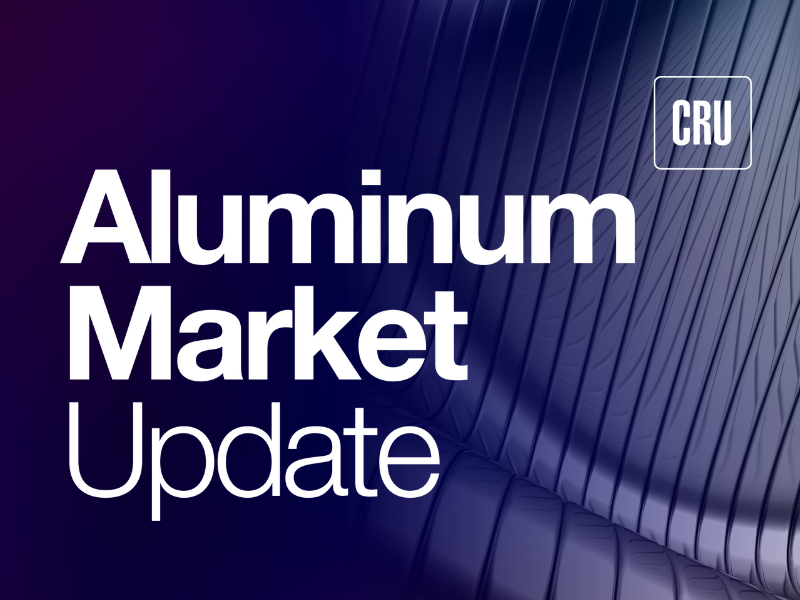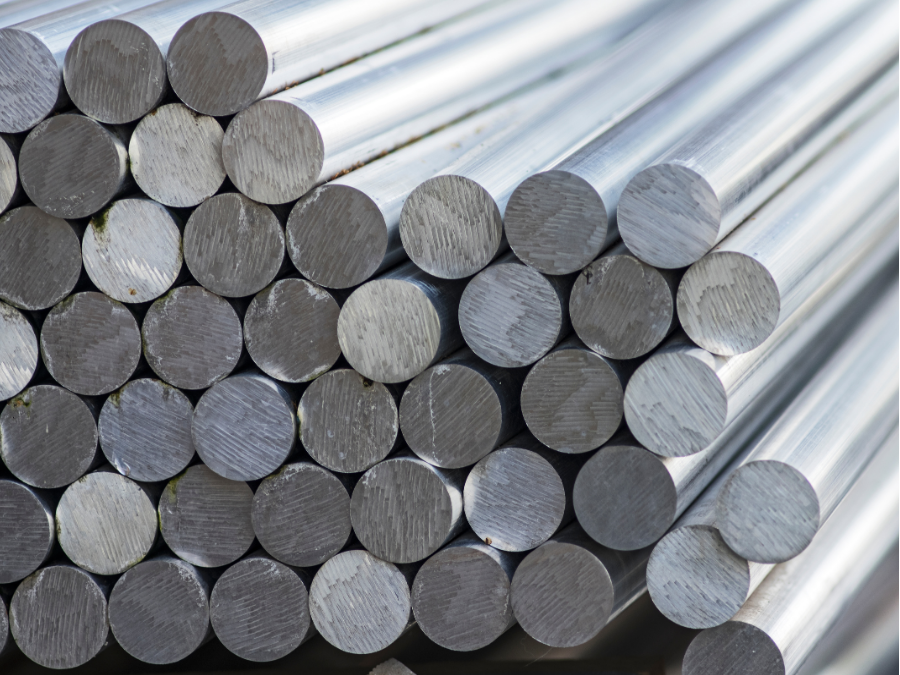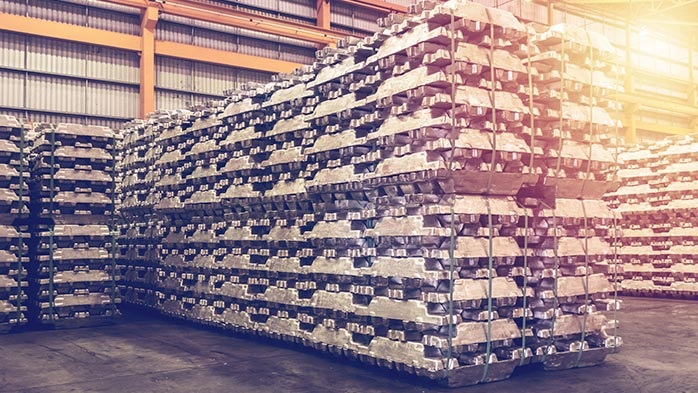Aluminum

CRU aluminum news roundup
Written by Marziyeh Horeh
April 12, 2024
March US new orders: February bump did not continue
Total domestic aluminum mill products orders in March were up 0.2% compared to March 2023, according to the latest “Index of Net New Orders of Aluminum Mill Products” released by the US Aluminum Association (AA). This is much lower than the growth of 9.3% year over year (y/y) reported in February.
In March, shipments across all products were much weaker compared to February. Some sectors even returned to contraction. This was the case for non-heat treatable sheet, which includes the 1xxx, 3xxx and 5xxx series alloys. New orders for these products were down 1.1% y/y in March from a growth of 13.7% y/y in February. The same trend was seen for export can stock, with new orders down 2% y/y in March from a growth of 52.4% y/y in February. New orders for foil were down 16.2% y/y in March, also down from growth of 17.3% y/y in February.
Other sectors maintained growth in March but this was weaker than in February. This is the case for domestic can stock, with new orders up 11.3% y/y in March vs. 16.4% y/y in February. New orders for plate were also up only 3.1% y/y in March, from 18.3% y/y in February. The only improvement was for heat-treatable sheet, which contains the 2xxx, 6xxx and 7xxx series alloys – popular in automotive and aerospace applications. Here new orders were down 0.8% y/y in March, better than the 1.6% contraction seen in February. Finally, there was still much weakness seen for extruded products and drawing stocks, with new orders down 10.7% y/y, and down 11.3% y/y, respectively, in March.
US Midwest premium settles after recent rise
The US Midwest premium has been trading between 19.5–20 ¢/lb. The initial jump was spurred on by the Baltimore port accident. However, it is believed that most of this has now been priced into the premium. While it has gained support at these new higher levels, another large jump higher is unlikely, barring another macro or geopolitical event. Market fundamentals had already been lifting premiums higher as demand started to come back slowly and other input costs, such as ocean freight, remain higher than a month ago.
The stronger Consumer Price Index (CPI) report did cast some doubt on future rate cuts by the Federal Reserve. Adding to this, slowing electric vehicle (EV) sales and an upcoming election create further uncertainty. While optimism has undoubtedly picked up alongside consumer confidence levels, this has yet to translate into a significant pickup in physical demand. There are important policy decisions looming on the horizon as the Global Arrangement on Sustainable Steel and Aluminum (GASSA) is still on the table, and the US International Trade Commission (ITC) continues their AD/CV investigation into extrusion imports.
Hydro Årdal opens new recycling unit
As part of its efforts to meet the strong demand for low-carbon aluminum in European markets, Hydro has invested NOK100 million ($9.2 million) in recycling technology in the casthouse at the Årdal primary aluminum plant in Norway. The upgraded casting line in Årdal will mix primary aluminum, made with renewable hydropower, with up to 30% of post-consumer aluminum scrap. This would result in a record low-carbon footprint, the statement says, which helps customers in Europe cut the embedded greenhouse-gas (GHG) emissions of their products.
The recycling unit in Årdal had its official opening on April 10. Hydro Årdal is now able to deliver REDUXA 3.0 aluminum with a carbon footprint of below 3.0 kg CO2e/kg aluminum. This is approximately 80% lower than the world average. CO2e represents the exchange rate of other greenhouse gases to carbon.
LME warrants of Russian origin remain at 91% of total open stocks
According to the latest Country of Origin report published by the LME, the share of Russian warrant on the LME remained at 91% of total open warrants in March. Open warrants of Russian origin were last reported at 311,900 metric tons (mt), showing a drop of 12,775 mt from February. The second-biggest origin remains India with 27,600 mt reported, down 1,300 mt from the previous month. Other origins include Canada (1,650 mt), Iran (200 mt), Oman (100 mt), South Africa (25 mt) and the US (750 mt).
US ITC investigation: Assessing GHG emissions in US steel and aluminum industries
The ITC is investigating the GHG intensity of steel and aluminum production in the United States. They will collect data from both US and foreign-owned facilities through surveys and prepare a public report as requested by the US Trade Representative. The report will estimate GHG emissions intensity by product category and production stage in 2022, including Scope 1, 2, and certain scope 3 emissions. It will also describe the methodologies used for data collection and analysis.

Marziyeh Horeh
Read more from Marziyeh HorehLatest in Aluminum

AMU: Cascade Die Casting to expand North Carolina site
CDC Atlantic already houses 13 die-casting machines (ranging from 900 to 1,600 tons), three on-site furnaces, and shot blasting capabilities.

AMU: Prysmian’s Encore Wire breaks ground on TX facility expansion
Prysmian’s groundbreaking for a 650,000-square-foot, medium-voltage cable facility on Encore Wire’s Texas campus marks a big development in the aluminum wire and cable sector.

AMU: Canada tightens trade policy on tariff tensions
The moves include reciprocal procurement restrictions, import quotas, and the formation of stakeholder task forces for aluminum industries.

AMU: The art and science of Midwest Duty-Paid Premium discovery
Hashing out duty costs

AMU: Bumper-to-bumper breakdown of aluminum’s changing role in vehicles
Some aluminum parts are being replaced by steel. And more manufacturers are salvaging what they can before sending vehicles to recyclers.
